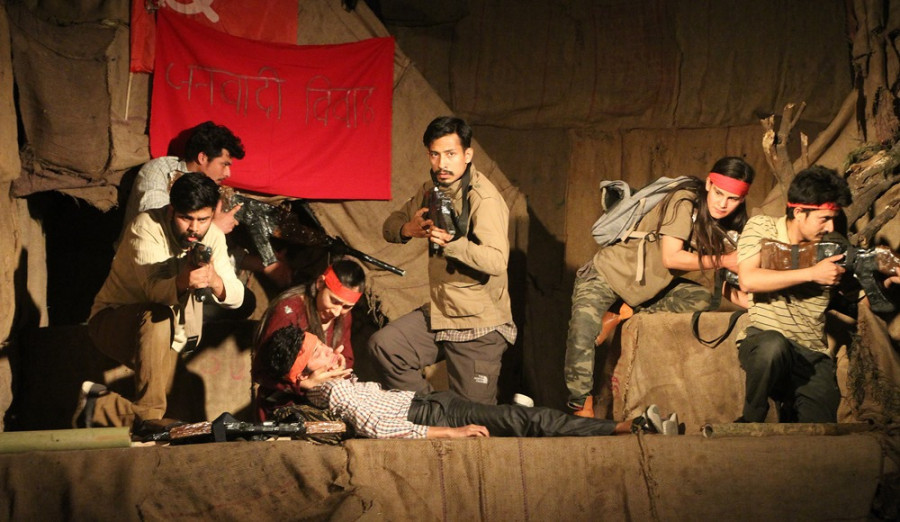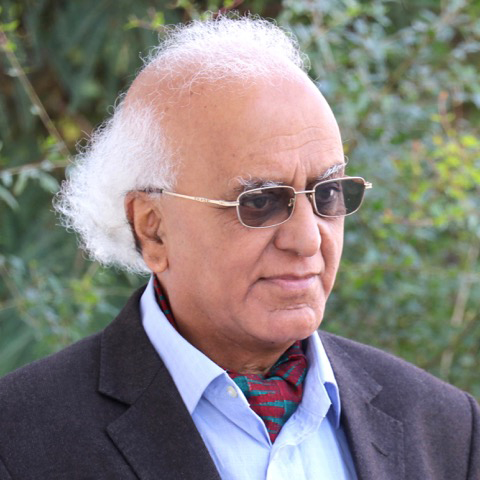Columns
World theatre day and our response
The colossal rise of chaotic political events challenges the theatre people today.
Abhi Subedi
Recently, Sandeep Dangol, theatre artist and designer of the accoutrements of the stage for both the proscenium and open environmental theatres, visited me with an invitation to participate in a programme organised to mark the World Theatre Day, March 27, 2023. The programme is being organised by his Mala Art Academy in tandem with the Academy of Drama and Music and its Chancellor and famous theatre artist Nisha Sharma. Dangol wanted me to read the message given this year by the Egyptian actress Samiha Ayoub in Nepali translation. For all people associated with drama and performance, World Theatre Day is an important event initiated in 1962 with the first message written for it by the eminent French playwright Jean Cocteau. As information about the International Theatre Institute (ITI) is commonly available, I would like to focus more on my personal experience with the institute and the turns the Nepali theatres have taken over the years.
I have some narratives to tell as the founding president of the Nepal ITI. There are stories about my colleagues, executive members and activities in the national and international spheres. We became a member of the world ITI in 2000 and started participating in the world theatre congresses beginning with the 27th in Marseilles of France. Since leaving the ITI, naturally, I maintained contact only with a few individuals. I believe Puskar Gurung and Sunil Pokharel and others did keep up the connections. My association with the Nepali theatre spans several decades. During this period, I wrote plays that were performed at Gurukul theatre by Sunil Pokharel, Puskar Gurung, Nisha Sharma and others, and shifted the mode of activism to academic karmas that continue to this day.
There is an interlude here. I received an invitation from the ITI nearly a decade after I left the organisation to attend the 70th anniversary of the institute held on a beautiful Chinese island named Haikou from November 23-26, 2018. The port city of Haikou is the capital of China’s Hainan province. That was supposed to be a grand meeting of the theatre people associated with ITI for years as well as others. It was organised in the style of a celebration. Some half a dozen people from among the participants were given honorary membership of the ITI on the occasion. I was one of them. I have always cherished that honour. I want to cite a review that I published in this newspaper on December 9, 2018, under the rubric "All the world is a stage”, which is an adage spoken by Shakespeare’s character in the play As You Like It.
“A total of 160 theatre people of different age groups from 19 to 90 had gathered for the celebration and cerebral discoursal moments on the subject of theatre and drama. It was a revelation and joy to meet the theatre stalwarts whom I have known since 2000 at the ITI world congresses. Several of them have retired from institutional engagements but are active otherwise writing plays, directing and creating a culture of performance dynamism in different societies,” I wrote. Ramendu Majumdar of Bangladesh is one of them. He became president of the world ITI for two terms (2008-14) and retired. He has sent me his memoir entitled Theatre Worldwide: My ITI Years through the dramatist Ashesh Malla who had met him in Dhaka at a theatre programme recently. The visceral writing of Ramaendu Majumdar, a leader in the world theatre and Bangladeshi rangamancha, brings a picture of worldwide theatre, especially the most important years of this century.
The 21st century saw some tremendous changes and challenges in theatre. The events that have unfolded since the beginning of this century are dramatic in nature. A strange mix of political events, ecological perils, dissolution of some of the leading 20th-century values and rise of new kinds of geo-political rivalries, terrible violations of human rights, suppression of the vulnerable, sufferings of women and children and routine destruction of houses, hospitals and schools in reckless bombings have become common experience today. The question that can be asked about theatre is: How can performative theatrical art give expression to such problems today? This has become a subject of discussion among theatre practitioners and artists. It would be interesting to recall the experiment of the famous theatre experimentalist and thinker Augusto Boal today. In the last years of the last century, Boal made a campaign with the slogan “Have the courage to be happy!” That is said to have appealed to nearly 70 percent of the people who struggle with poverty. Boal believed that politics and theatre should be integrated and the problem should be addressed in that manner. But the integration of theatre and politics is not easy. Such experiments have been made time and gain in South Asia, in Bangladesh, India and Nepal.
But the colossal rise of chaotic political events challenges the theatre people today. The ideal solution to such problems would be to make the theatrical forms very strong and use the political themes in a proper dramatic manner by containing them within the theatre norm. We should stress that theatre as a form should deal with political themes. Nepali theatres have made important achievements in the 21st century, some of which should be mentioned as we celebrate the International Theatre Day. Nepali theatres have developed stages or spaces to perform and function. We all know their names. Different theatre groups have found some ways to function by creating theatres, forming bodies of artists, creating centres for trainings, finding texts to perform, using different theatrical techniques and, most importantly, attracting theatre audiences.
There are challenges too. Theatre directors have to regularly rely on non-native and sometimes weak and cliché themes for performance. Repetitions and working with non-themes are other problems. But as we are celebrating the International Theatre Day on March 27 in Nepal, we should not forget that Nepali society is grappling with political problems and the culture of solipsism and grabbing, which would certainly have some effects on theatre. In other words, the most tantalising problems are created by political uncertainties and the overt interest of the people in those areas. I am not sure if Nepali theatre could work hand in glove with politics as suggested by Boal, but the moral of his suggestion is that you could make theatre vibrant not by avoiding political themes but by working with them, and, I would add, in the true spirit of theatre. The dramatic paradox of our contemporary world caught between consonance and dissonance as mentioned by Samiha Ayoub in her message could also be true about Nepali theatre.




 18.12°C Kathmandu
18.12°C Kathmandu















